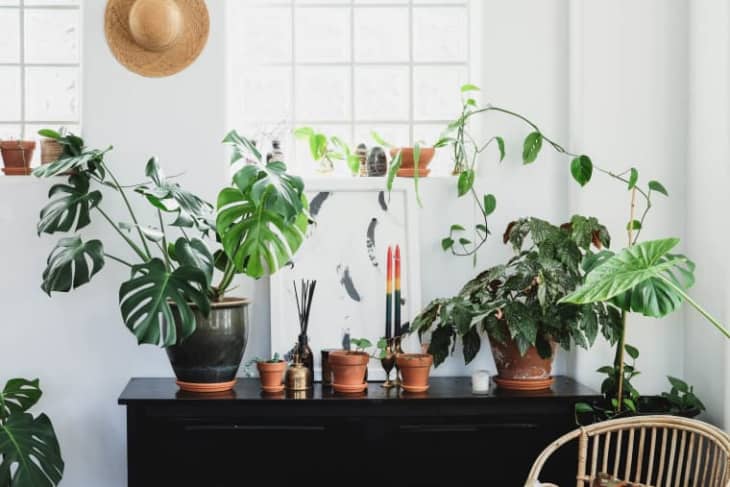Adding a few houseplants is a foolproof way to brighten up your decor while adding a aura of serenity to your space. Unfortunately, houseplants can get pricey, especially for big showstoppers or unusual varieties. Let’s be honest: it’s tough to pull out your credit card when you’re not sure a plant will actually survive your apartment’s environment, or the blunderings of your black thumb.
But that doesn’t mean you have to live without indoor greenery. Plant swaps are a great way to add some new plants to your collection for a minimal investment, and who knows, you might meet some new plant-loving friends at the same time.
What Is a Plant Swap?
A plant swap happens when plant-lovers get together to trade cuttings or baby plants. Some events might require an entry fee donation, but not always. Sometimes they’re hosted by libraries or a local garden club or nursery. Other times they might be a more informal gathering of friends.
To participate in a plant swap, you’ll first need some plants you’re willing to trade. Simply take some cuttings of your current houseplants—you’ll want at least two or three to trade. The cardinal rule is that your plants must be healthy and pest-free, but, beyond that, you can swap whatever plants you like, either potted or bare root. (Vegetable seedlings are often welcomed in spring, as well.) Unusual or trendy plants will likely get you the best trades, but there’s nothing wrong with taking all those baby spider plants you have.
How to Find a Plant Swap
The best way to find out about plant swaps in your area is to be tuned into community news. Check town bulletins, local publications, and social media groups and event postings. Sites like Meetup, which help people organize local or regional gatherings based on shared interests, are also a great place to search.
How to Organize Your Own Plant Swap
If you can’t find a plant swap in your area, why not organize one yourself? If you’d like to keep it small and intimate, invite just friends, family, and coworkers for a plant swap at your place. Or, use social media to gauge the interest of other people in your community and then take charge of organizing the event at a local park. Selling tickets for $5 or $10 will ensure people actually show up on the day of the swap, and proceeds can be used to pay for event space or refreshments or donated to charity. Propose that a local library or community center formally host the event as a fundraiser while you volunteer your time to help get it set up. As the host, you’ll want to be sure to have some extra plants on hand to ensure everyone who attends gets to go home with something new. Otherwise, once the logistics are in place, all that’s left to do is enjoy spending time with people who love plants as much as you do.
Hải Yến
Gió bạn với cây tự buổi nào ,
Gió về cây lại ngất ngư chao .
Gió đi cây sẽ im lìm đứng,
Như kẻ lỡ làng dạ khát khao .
Hải Yến
Gió bạn với cây tự buổi nào , Gió về cây lại ngất ngư chao . Gió đi cây sẽ im lìm đứng, Như kẻ lỡ làng dạ khát khao .



